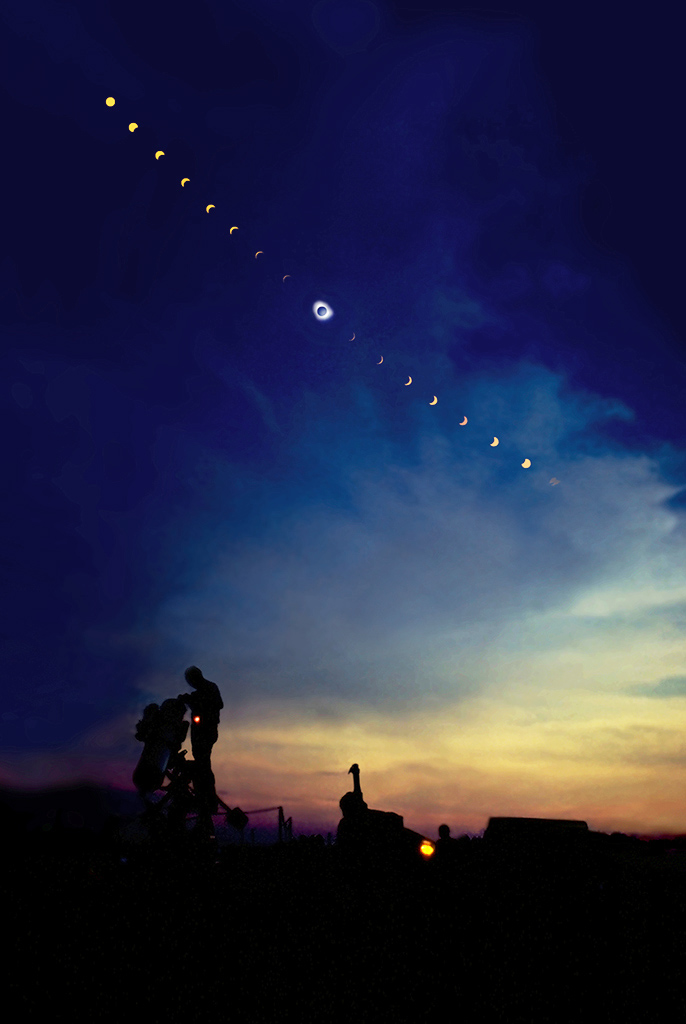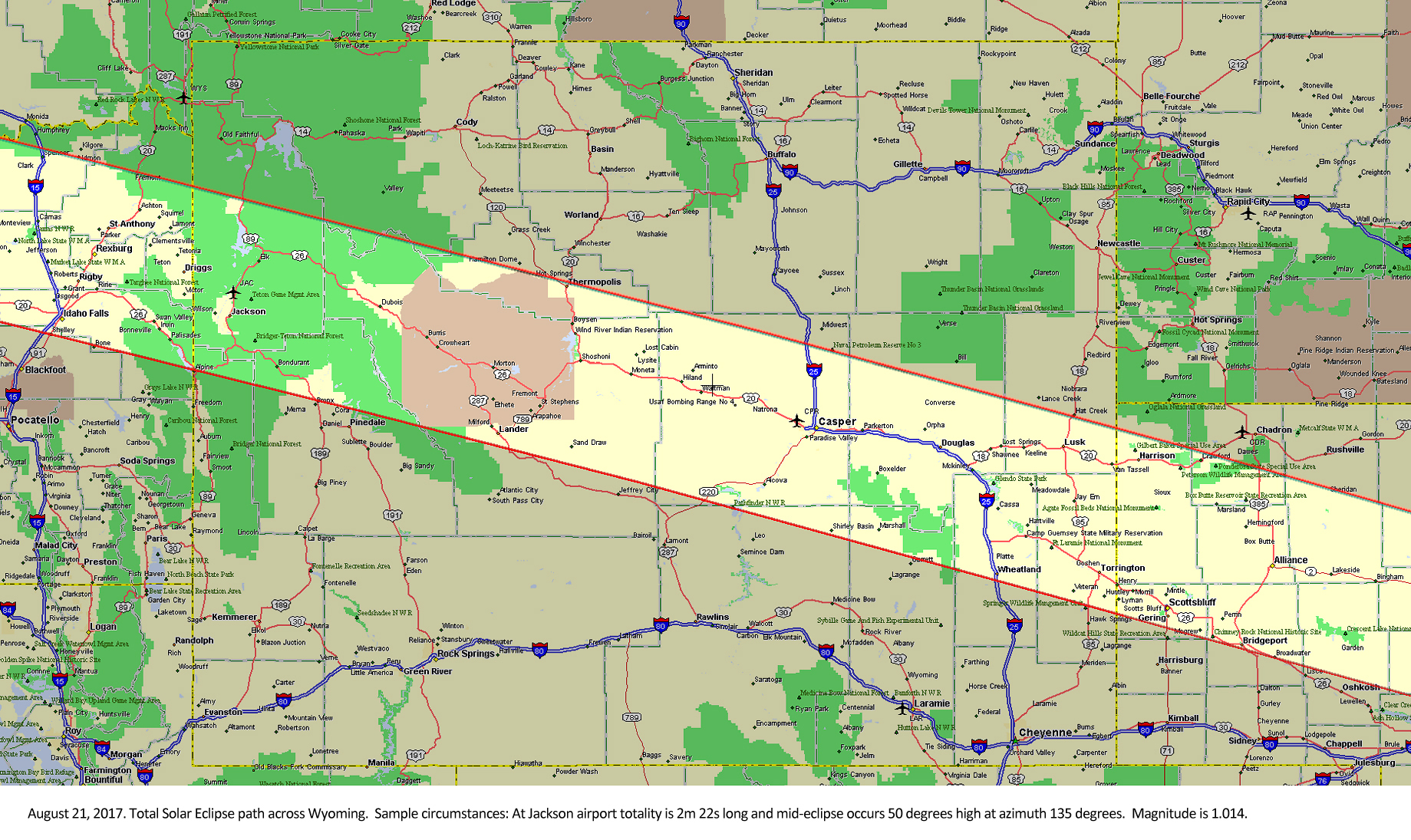|
8/12/2013. Forty-one years and some odd weeks ago, the Sun was totally eclipsed over Prince Edward Island. I made a photograph of the shadow of the Moon on high cirrus clouds just at the end of totality. The western edge of the Sun was just about to burst around the Moon; the innermost corona and the crimson chromosphere were already visible. In the west, daylight returned to distant clouds and moved toward us. I reached down, away from the telescope, and tripped the shutter on a tripod mounted camera set up for just that moment. That's going to be a good one, I thought, and then it was daytime again. The photo was a 1/4-second exposure at F3.5 through a 28mm Lentar lens on a Praktica FX3 using Kodachrome-II. (As a matter of fact I do remember all those details.) Dr. Edward Burke, Jr., is silhouetted against those distant, sunlit clouds. He's using a flashlight to operate a trailer-mounted 10-inch reflector; his daughter Julia is using a 3-inch Unitron refractor at center. Machinist Don Pippin and his family are somewhere out of view to the left or right as are amateur astronomers Ken Childress and Marcus Williams (who, along with yours truly, begged a lift to the show). I also shot many partial phases of the eclipse through a Questar 3.5. With more computing power than I could imagine in 1972, it was relatively easy to combine selected partial eclipse photographs with the photo of totality's end and arrange them along the path of the Sun in the afternoon sky. Guide 9.0 provided angles and times, the pile of old Kodachromes provided the raw material. Here's the finished photo, a total eclipse of the Sun near Stanhope Beach in maritime Canada, only 41 years in the making:
Total Solar Eclipse, July 10, 1972
The shadow returns. Place your weather bets, make your plans, take your best shot. Here's an interesting part of the path of totality on August 21, 2017:
(Right-click and view-image to see useful detail)
The best planning tool I've seen so far is NASA's:
:: top ::
|
© 2013, David Cortner

